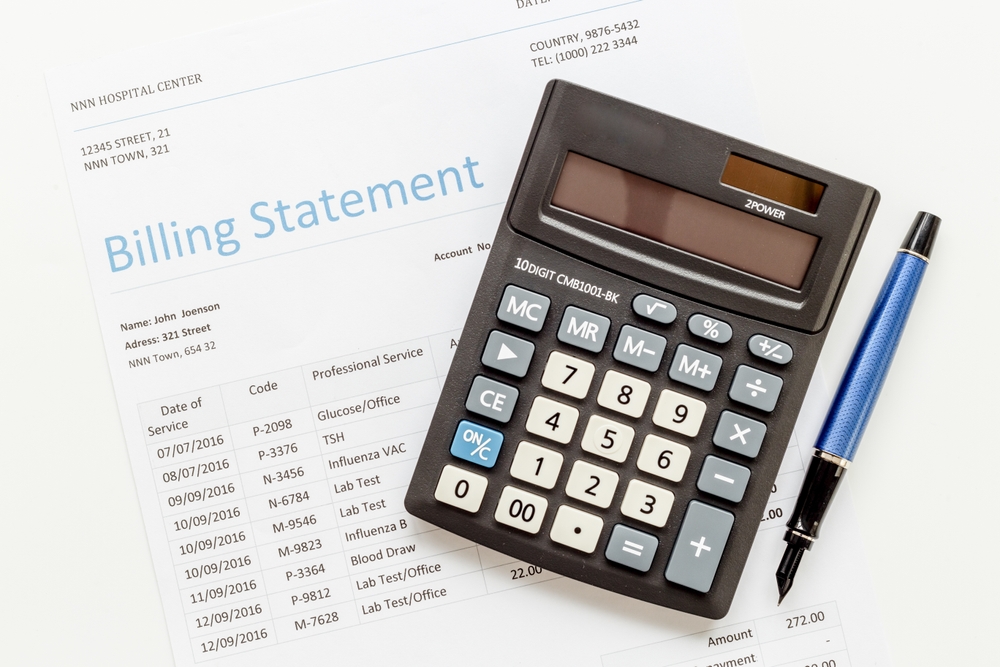We are born into one body, which we need to take care of because it must last us our entire lives. So, it should come as no surprise that for most Americans their top priority is great healthcare. But, the cost of healthcare insurance premiums and services and prescription drugs have risen dramatically leading to financial risks. So, if you want to keep your health and financial health in check, you need to understand the ways to keep your medical bills under control.
A Brief Primer on Medical Billing History
In the US, medical billing was once a simple affair with personalized charging directly to the patient based on their ability to settle the bill. This became more complex after the introduction of health insurance in the form of Medicare and Medicaid. The billing became standardized and coding systems were employed to improve efficiency. A shift to EHRs (Electronic Health Records) and EDI (Electronic Data Exchange) modernized the billing process.
However, there are still challenges to overcome in regards to access to healthcare services and cost containment to make them affordable. Here’s a brief breakdown of the major changes that brought us to where we are right now.

- Early 20th Century: The dominant billing model is fee-for-service where physicians and hospitals set their charges and a patient pays out of pocket or signs up for an installment plan.
- Mid-20th Century: Health insurance becomes available with billing codes and negotiated schedules which standardized medical billing fees.
- 1965: The government-funded Medicare and Medicaid programs are introduced which facilitate a large-scale system to further standardize payment for healthcare services.
- Late 20th Century: The EHRs are developed in the 1970s.
- The Millennium and Early 21st Century: The EDI and ANSI X12 standardized billing formats are implemented for electronic claims processing.
- Present Day: There are still challenges to overcome regarding healthcare access and costs, but EHR and complex coding systems continue to evolve. In the coming decades we are likely to see AI come to the forefront to improve efficiency.
How Does Medical Billing Work?
At first glance, medical billing can be hard to understand, but in reality the process is quite simple. Let’s break the process down into key steps to help you understand how the medical billing process works.
The Appointment
The medical billing process begins when you schedule an appointment with your healthcare provider.
Preauthorization and Verification
The healthcare provider checks with your insurer to confirm that you have adequate coverage and pre-approvals that may be necessary for your treatment.
Coding and Claim Creation
All healthcare services have standardized codes, such as CPT or ICD-10 which outline the diagnoses and treatments.
Claim Submission and Processing
The healthcare provider submits a claim to your health insurer for their review and payment for their services.
Receiving the Medical Bill
After your insurer processes the claim they will send you a bill that details what they’ve covered and what you need to pay.
The key to these medical billing systems are the procedural codes that define the services. If you understand these codes, you can ensure that your medical bill is accurate and in-line with the treatment that you received.
There are a number of elements that will add to the overall cost of medical treatment.
The Facility Fees
These cover the costs that are associated with the clinic, hospital or other medical facility where the treatment was administered to the patient. This includes overhead expenses, such as staff salaries, utilities, maintenance and capacity factors. The capacity encompasses the resources of the medical facility to deliver high-quality care in a timely fashion.
Provider Costs
These encompass the physician and specialist fees rendered by the healthcare provider that were required for your care. The fees are influenced by a number of key factors, such as the expertise required, the complexity of treatment and the duration of the healthcare services. The costs may increase depending on the reputation of the healthcare provider and their geographic location.

Supply Costs
This is the price of the medical devices and materials that were used throughout your medical care. This could be something simple, such as a bandage or syringe or a more advanced device like an X-ray or MRI machine. The supply costs are not static, they are influenced by availability, market prices and the needs of each specific medical procedure.
7 Effective Strategies to Lower Your Medical Bills
According to data released by the US Census Bureau, 91.7% of Americans have sufficient health insurance coverage to meet most of their healthcare needs. However, even those with great health insurance plans can comparison shop for better deals just like they would with auto, home or any other kind of insurance plan. This can significantly lower your insurance premiums without compromising the level of healthcare. Let’s take a look at seven solid strategies that you can use to choose your next health insurance provider.
| Situation or Decision Point | What Most People Do | What Informed Consumers Can Do Instead | Why It Matters |
|---|---|---|---|
| Choosing a healthcare provider | Go with whoever is recommended or closest | Check if provider is in-network, compare ratings on Healthgrades or Leapfrog | Out-of-network care can cost 2–4x more; quality varies widely |
| Before a medical procedure | Assume insurance will cover it | Ask for CPT/ICD-10 codes, get preauthorization, and request itemized price estimate | Reduces billing surprises and supports accurate insurance claims |
| Receiving a prescription | Accept brand-name medication suggested by doctor | Ask about generic or therapeutic equivalents; compare prices with GoodRx or pharmacy discount cards | Generic drugs can cost up to 85% less, with similar efficacy |
| Handling an unexpected bill | Pay immediately or ignore out of fear | Request itemized bill, check for duplicate charges or unrendered services, then negotiate or set up a payment plan | Errors affect 7 out of 10 bills; paying without review can waste money |
| Deciding where to go for care | Go to the ER for any urgent issue | Assess urgency—use telehealth or urgent care when appropriate | ER bills often exceed $2,000; urgent care costs a fraction of that |
| Routine health monitoring | Delay checkups until symptoms worsen | Schedule annual screenings and take advantage of wellness visits | Preventative care catches conditions early, reducing lifetime costs |
| Planning for medical expenses | Hope insurance covers it | Use HSA/FSA accounts for tax-free medical spending; deduct eligible expenses if they exceed 7.5% of AGI | Optimizes tax benefits and builds a financial buffer against healthcare debt |
| Managing chronic conditions | Rely solely on reactive treatment | Use insurer-provided care coordinators, track conditions via EHR portals, and stick to lifestyle changes | Better outcomes and lower costs from fewer hospitalizations |
7. Research the Service Costs
Due to the rise in healthcare costs, there has been an increase in third-party entities that advise consumers on their provider and treatment options. Two notable consumer website examples are The Leapfrog Group and Healthgrades.com. But there are many others to choose from if you prefer an alternative organization.
These groups provide approximate prices for medical services online from a variety of sources, such as insurance companies, private hospitals and the federal government. When a diagnosis or recommendation for a procedure has been received the costs of treatment may be lowered with some simple online research. Becoming an informed customer can have a dramatic impact on the final bill for your treatment.
6. Ask for the Cost Up-front
Many people are surprised to learn that they can ask their physician to provide them with an estimated cost of a medical service or procedure before they even schedule their appointment. Then if the costs are too high, they can seek treatment elsewhere or negotiate to save time and money.
If the appointment or procedure is routine in nature, it’s relatively easy to shop around with other local doctors to find the best deal. If you need to spread out the cost of treatment, check if the healthcare provider has installment plans. Always ask the doctor if a recommended test or procedure is medically necessary to avoid higher out-of-pocket deductibles.
5. In-Network Care Providers
Those with a Preferred Provider Option (PPO) health insurance plan can have most of their bill paid by the insurer minus their co-pay, if they choose a healthcare provider that’s part of their insurer’s preferred network.

Using a doctor or hospital that isn’t part of the network will mean that you’re going to pay a larger portion of the final bill. The amount you will pay will vary depending on the type of services you use and their cost. But, a PPO will always pay a lower portion of the medical bills if you choose treatment that’s offered outside of the network.
4. Planning and Paying in Cash
When an injury or illness occurs, it’s important to evaluate the severity and the need for urgent medical care. This will be helpful to choose whether to go to an emergency care facility, seek urgent care or call your healthcare provider. To put this into some perspective there are two simple categories to consider.
- An Emergency: If a fetus or person may be at risk of permanent harm of death this should be treated as an emergency situation. Some common examples include severe bleeding and pain, chest pains and trouble breathing.
- Urgent Care: If the medical care is less urgent, but it cannot wait until the following day it should be considered to be an urgent care scenario. Some common examples of urgent care include a dog bite, strep throat, high temperatures and more.
It is possible to save time and money with a proper risk assessment because a trip to the emergency department can be cost prohibitive for most people. If you plan ahead to find out which urgent care centers you have nearby, this can be a real time saver later. Learning how to recognize a medical emergency in children and adults is also a great use of your time. It can help you determine whether it’s worth waiting to see your primary care doctor or rush to an emergency room to get checked out.
But, it is important to add a note of caution. Most of us are not medical professionals and it’s all too easy to make a mistake in the heat of the moment. So, if you are in any doubt that you’re dealing with a medical emergency, always err on the side of caution to avoid a potential tragedy.
3. Choose Generic Prescriptions
The FDA eased the restrictions on pharmaceutical companies advertising directly to the public back in 1997. This is known as DTC advertising and it’s now come under increasing scrutiny and a complete ban may be in our futures.
The exposure to high profile ad campaigns to promote specific name-brand drugs has had a huge impact on their uptake. However, according to the FDA the generic drugs on offer today are just as safe and effective and they are far more affordable. So, when you see your doctor or pharmacist, always ask about generic OTC alternatives that can potentially lower the costs of treatment.
2. Review Medical Bills
It’s important to check your medical bills to ensure that you actually received the services, drugs and other items listed. If there is an error, request a copy of your medical chart and pharmacy ledger. This information can be compared to your doctor’s orders for the various services that may be on the bill.
This extends to insurance claim processors that may make a mistake which results in incorrect billing. If you’re concerned about the bill, contact your healthcare provider claim manager to review your case. They can often identify and correct billing errors quickly to ensure that you’re paying the correct amount.
1. Create Your Payment Plan
If you cannot pay your bill in full and/or on time, contact the billing-office staff and ask about a payment plan. Creating a payment plan will help you to break the cost into manageable payments over an extended period. Make sure you check the interest rates before you make a final commitment, and check that alternative funding methods are not a better option.

Engage in Preventive Care
Eventually, even the healthiest and most careful person will succumb to some kind of injury or disease. But, regular exercise, healthy eating, relieving stress, and more, can help to stave off and mitigate these negative health consequences.
One of the best ways to engage with a preventative care mindset is to commit yourself to early detection. At the earlier stages of any disease or condition, it’s typically easier and more affordable to treat. The health outcomes tend to be much higher and medical bills will be lower which is a win-win for the patient and their loved ones.
- Earlier Detection and Treatment Options: A regular checkup and screenings can identify health problems such as diabetes, high blood pressure, certain types of cancer, and more at an early stage. This can help the patient to avoid more intensive and by extension more expensive treatments.
- A Reduction in Emergency Care: Those engaged in preventative care can prevent an acute health crisis and manage chronic conditions. This reduces the need for expensive emergency room visits and the risk of hospitalization. The most expensive type of healthcare is emergency care. So, if you can reduce or avoid this type of care you can save a lot of money!
- Reducing the Risk of Long-Term Complications: Preventative care can minimize complication risks and the need for expensive and complex treatments. The development of a chronic disease may be avoided entirely with simple lifestyle changes.
- Improved Health and Well-being: The adoption of a focus on preventative care will naturally promote health lifestyle changes, such as regular exercise, healthier eating, effective stress management and more. These changes will improve your health and sense of well-being and reduce the risk of a wide variety of health conditions. When the population is healthier there is a lowered need for healthcare and ultimately this would translate into lower costs for everyone.
FAQs
Can I Save on My Medical Bills if I Use Urgent Care?
This may be possible depending on your specific insurer and how much you would need to pay out-of-pocket for the urgent care visit. It’s important to understand that a visit to an urgent care facility is usually less expensive than going to the ER at your nearest hospital.
Can I Claim a Tax Deduction for My Medical Expenses?
Yes, if you itemize the deductions for the taxable year on Schedule A (Form 1040) Itemized Deductions you may be able to deduct both dental and medical expenses paid for that year for you, your spouse and your dependents. According to the IRS, you can deduct only the amount of total medical expenses that exceeds 7.5% of your adjusted gross income.
How Can I Get the Most Out of My Benefits?
Routine health screenings to detect health issues at an early stage can be a game changer. In many cases, there is no need to pay a copay or co-insurance for annual wellness checkups, health screenings and vaccinations. If you’re pregnant, getting prenatal care is the best way to keep mother and baby healthy.
Certain health plans offer a case manager or health advocate which can be useful to ensure that you’re getting the most out of the benefits package. This is especially useful if you need to manage a complex health issue like asthma or diabetes. Check for free or discounted services on eyewear, gym memberships and more to take full advantage of potential savings.
What Steps Can I Take to Lower My Lifetime Health Costs?
There are preventative measures to explore that will improve your health and lower the costs of healthcare over the course of your life. The easiest change is to engage in regular exercise, even a half an hour of walking each day can make a huge difference.
Look into your diet, avoid highly processed and sugary foods and explore healthier alternatives. Many people extol the virtues of veganism or vegetarianism, but these stricter diets may not suit everyone.

What Are Some Common Mistakes to Avoid?
When it comes to reducing medical bills, there are some common mistakes that you need to avoid. First, don’t ignore a medical bill, as this can lead to late fees, there may be collections, and you can damage your credit score. Don’t pay the bill without reviewing it for errors or you may be paying for treatments and services that you didn’t receive. Don’t forget to negotiate with the healthcare provider when you pay out-of-pocket fees to lower the prices of planned procedures.
Don’t hesitate to ask about ways to manage the cost with your healthcare provider, they may have payment plans and financial assistance programs to help spread the costs of healthcare.








